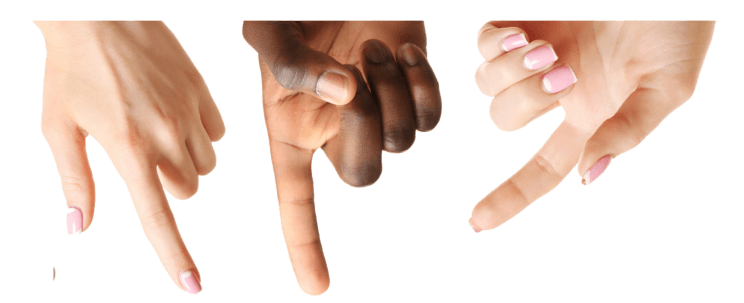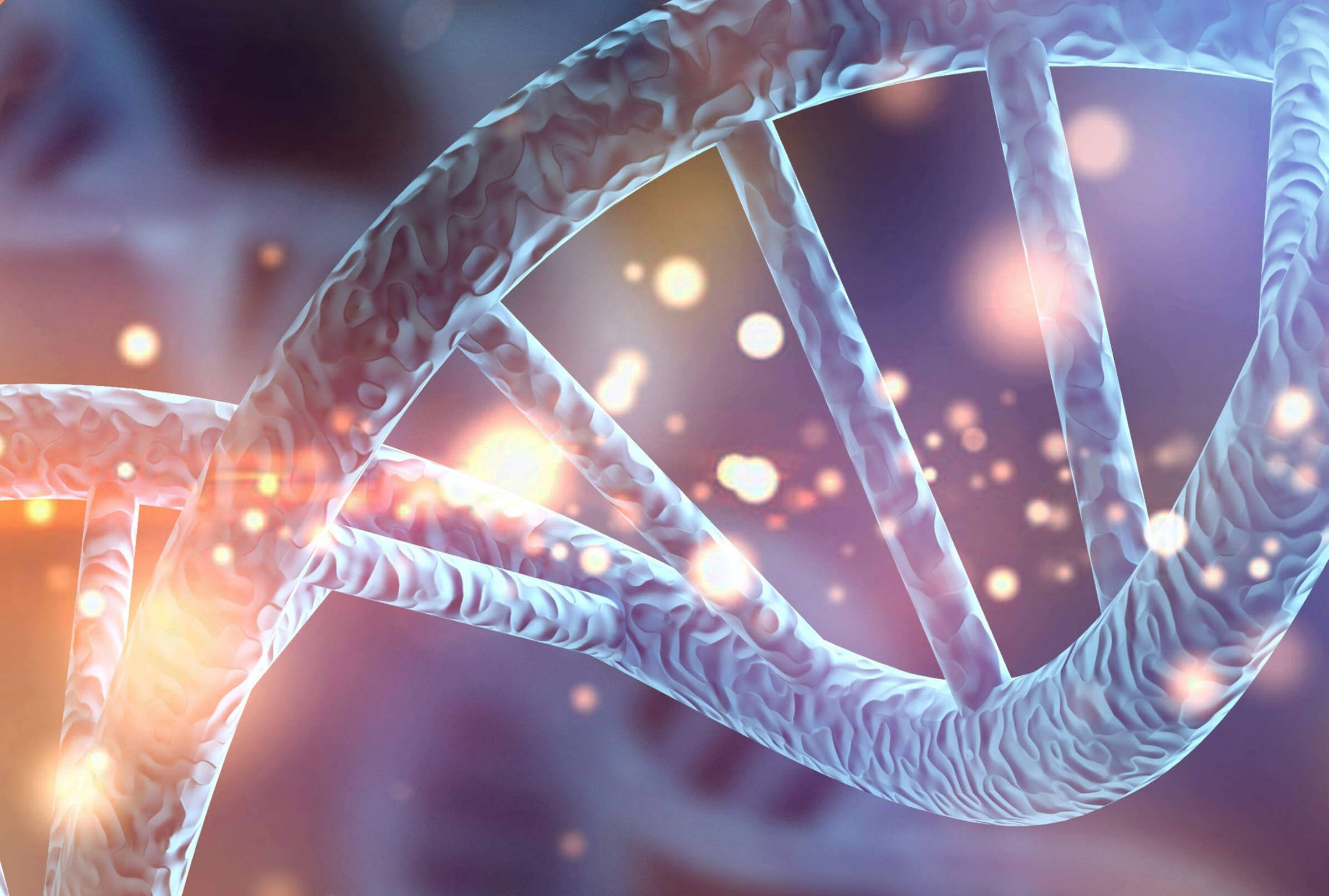

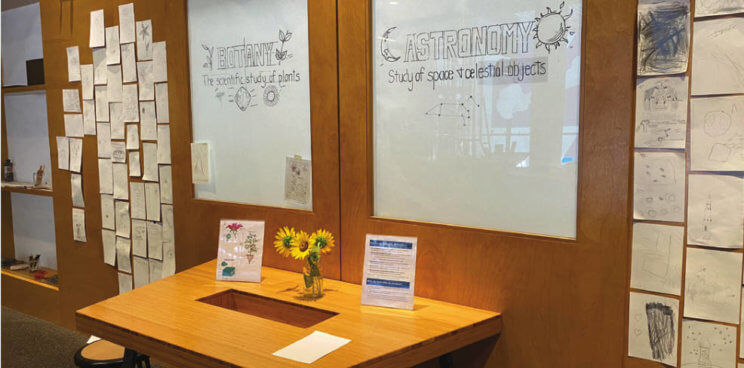
MakerSpace has been completely rethought and focuses on scientific observation – the basis for many of today’s discoveries! Read about these changes in this issue.
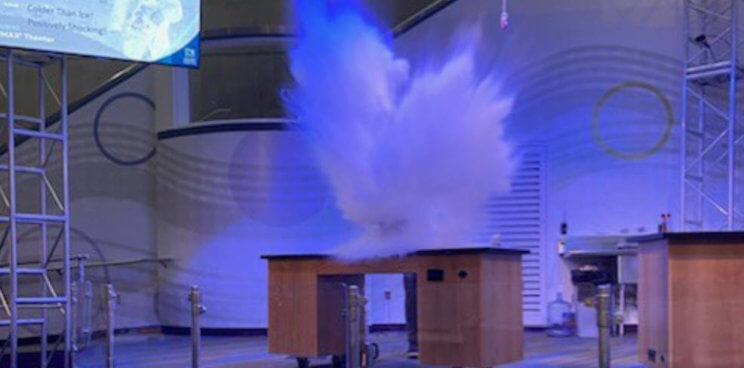
Liquid nitrogen and warm water mix to create a cooling cloud the audience can feel from a distance.
To do that, we consider how we can demonstrate a concept like clouds and weather, then ask the question, “How can someone touch that?” In this case our answer is by mixing liquid nitrogen and warm water, which results in a cloud with cooling effects that can be felt even from a safe distance. (See this in person at the Colder Than Ice demo at the Energy Stage each day.) When touch might not be physically possible, like with DNA, we use physical models or even some representations that are 3D printed in our Makerspace.
You can see many of those models in our Life Science Lab. Our work is framed around touch and group learning. As we started to reopen we quickly realized, in order to serve our mission, we would have to adapt to some new constraints, like physical distancing, mask wearing and increased cleaning to keep our hands-on experiences within important city guidelines for safety. As we started thinking about how to accomplish this, we wanted to keep touch at the forefront as much as we could. We relied on the design and engineering process—Think, Make, then Try—and included time at the end of each day to reflect on what worked, as well as what we can do better.
After reopening, we started offering one-on-one engagement with objects. These allow us to connect with our guests, have meaningful conversations and keep touch’s role in our learning model central to the guest experience. As our members and guests begin to return they can expect the galleries to look a bit different. Our Makerspace gallery has been completely rethought, and guests can learn about scientific observation. (Read more about this on page 17.) And while the Discovery Room is closed, little learners can experience pop-up early childhood stations on select days.
What hasn’t changed is that, at our core, the education team at the Science Center gets to live the museum’s mission every day by making meaningful connections to science. Sometimes all it takes to start a lifelong passion for science is just a touch.
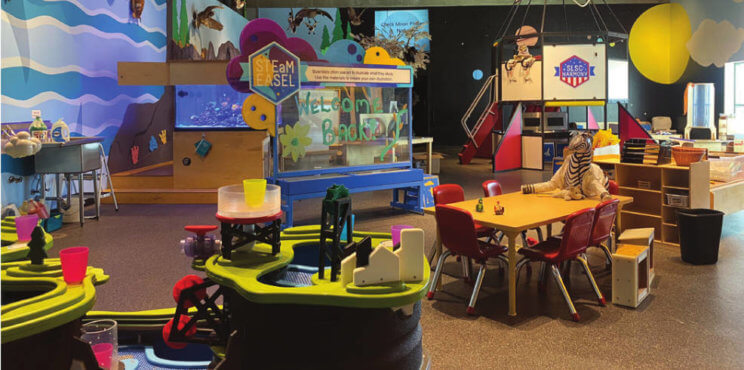
Discovery Room is closed, but you can see our Early Childhood team at our Energy Stage for Science Storytime and experience pop-up early childhood stations on select days.
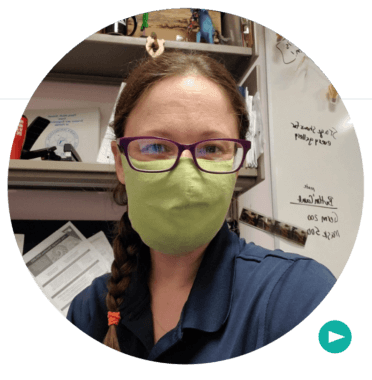
See you soon in your museum! Watch this video from Associate Director of Education and Galleries, Liz Senzee, to hear more about the use of touch in the galleries.






